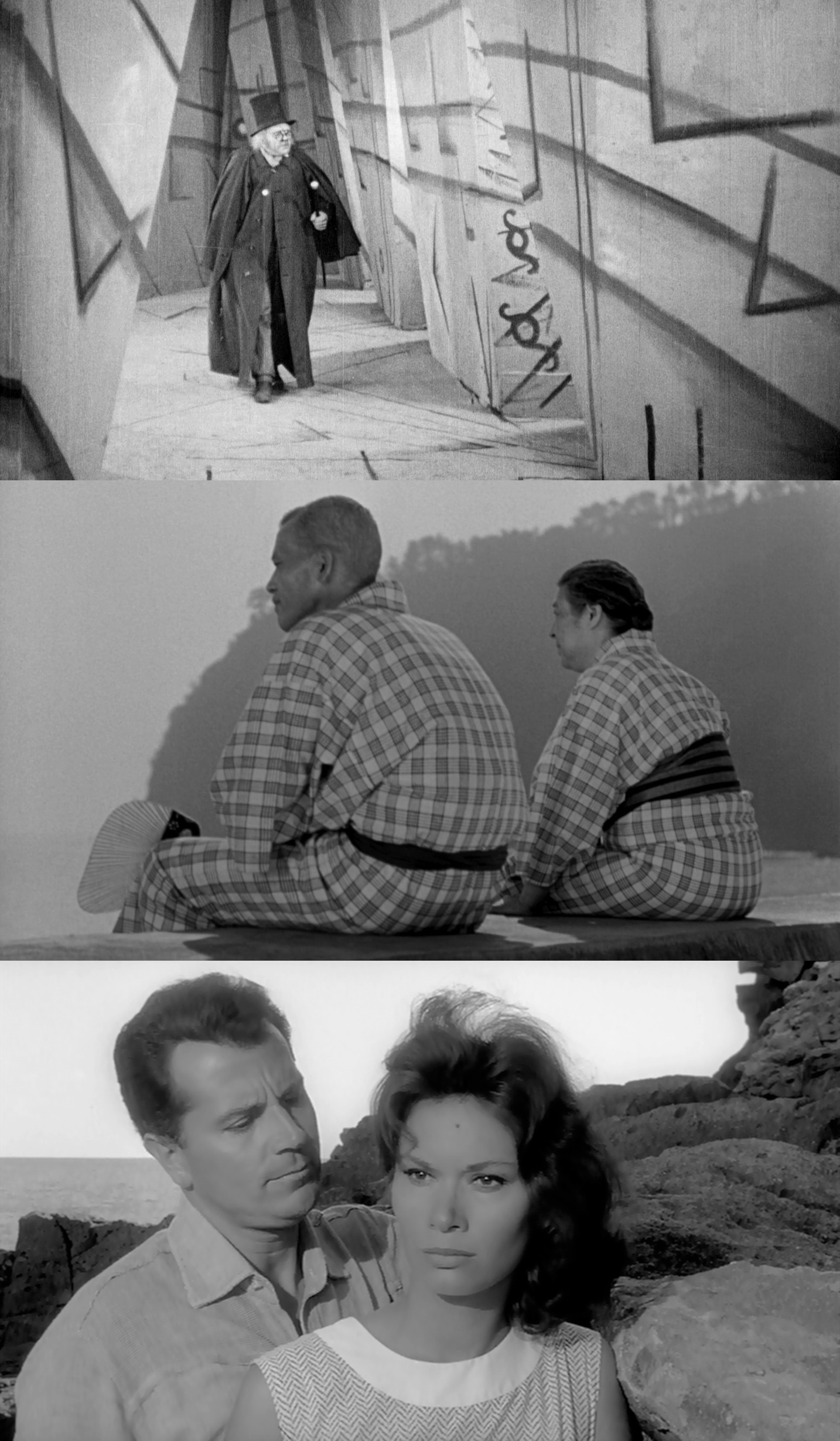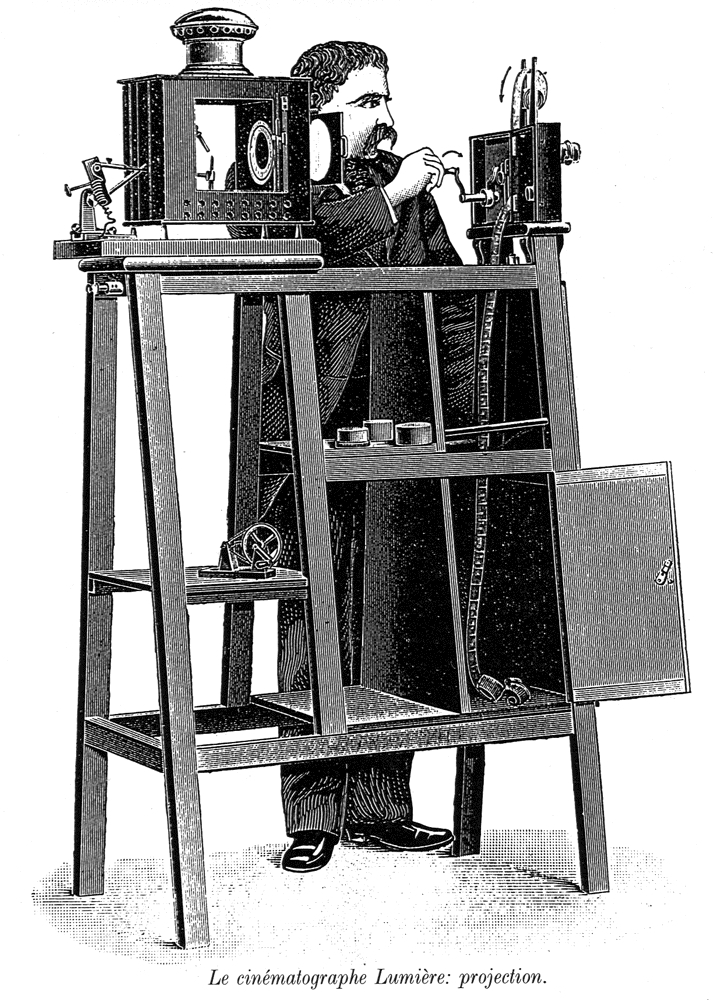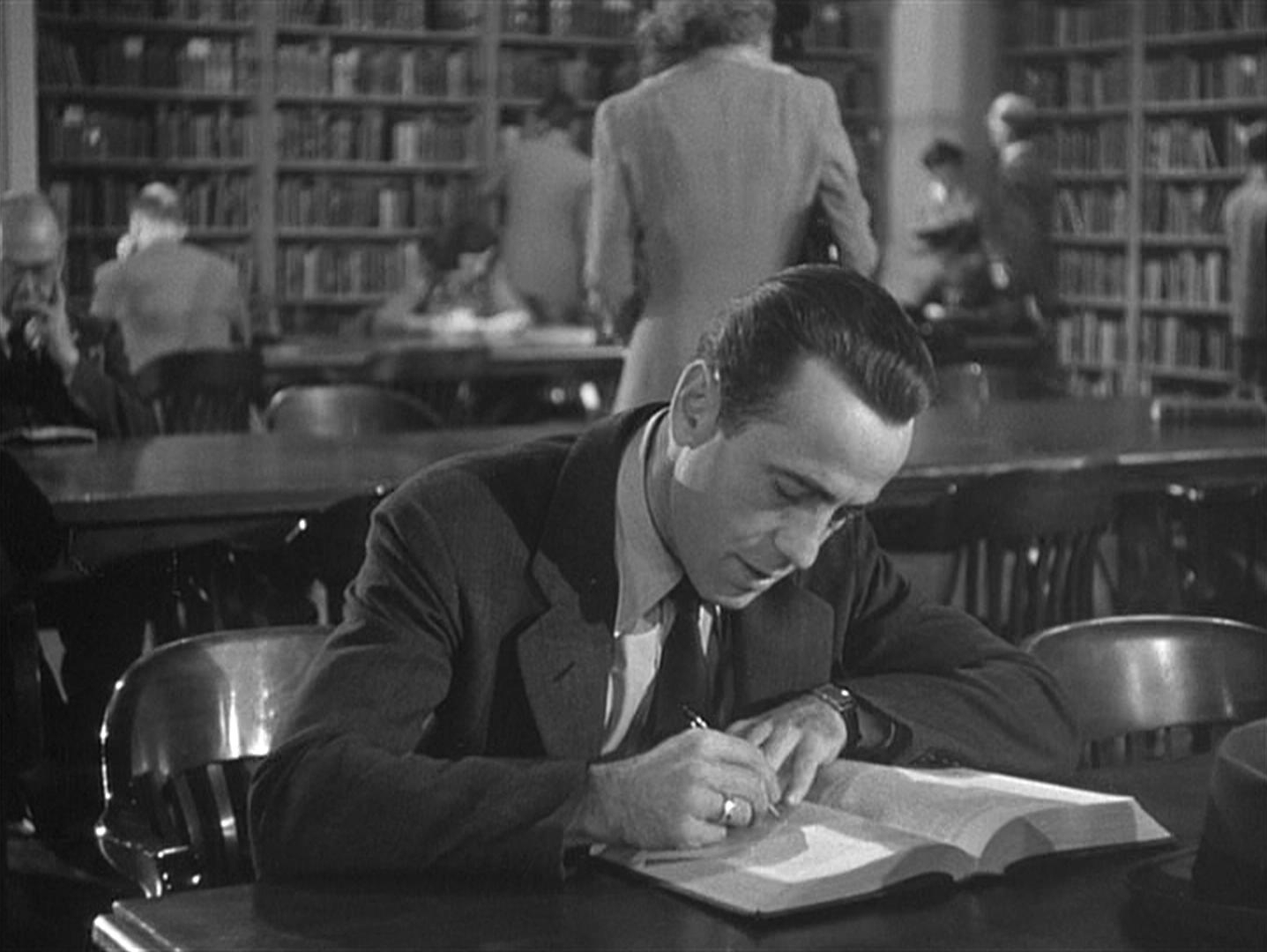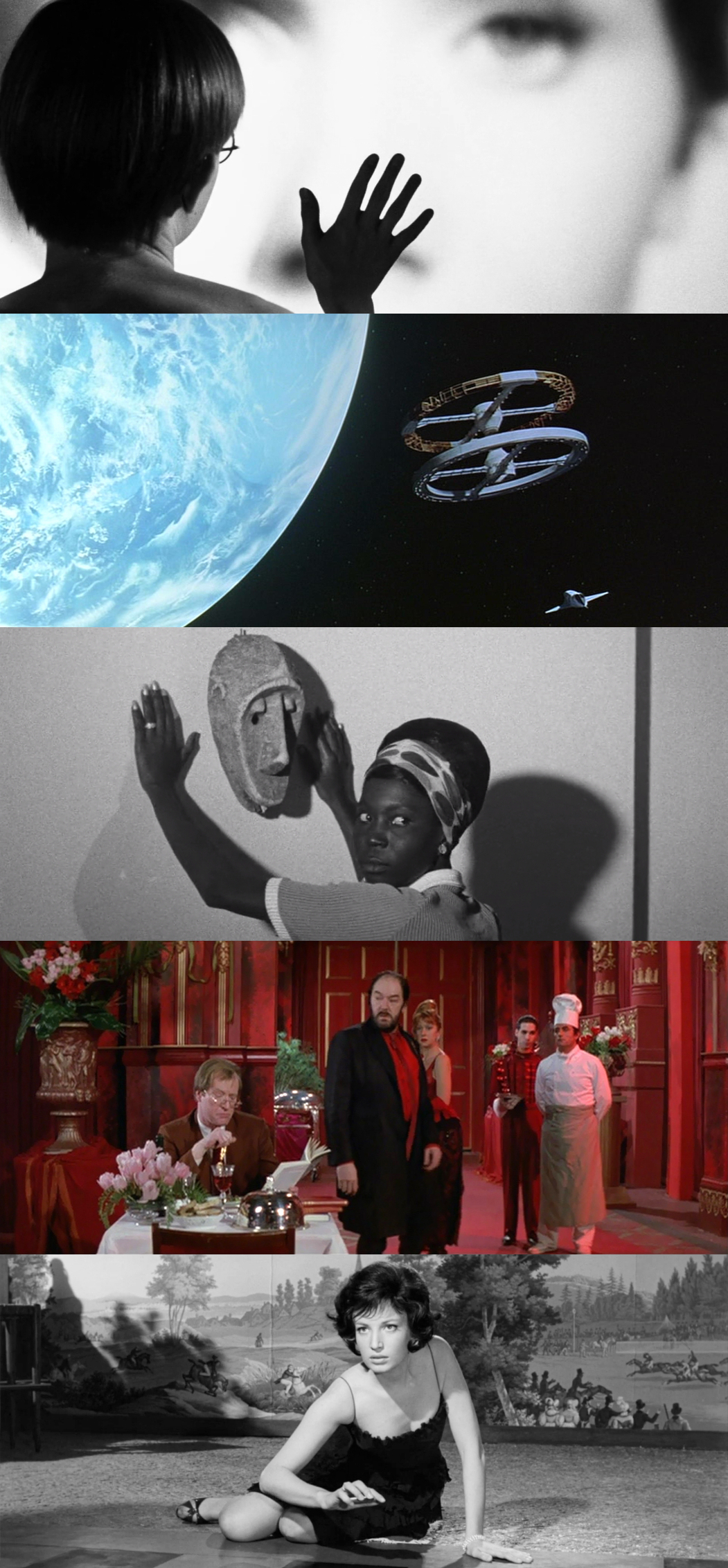ABOUT THE CINEMATOGRAPH WEBSITE
Introduction
The goal of this site is to breathe new life into the study of movies. It’s mainly a set of film interpretations… not fanciful or outlandish interpretations, nor the laborious kind of analysis that can drain the life out of a movie, but readings based on careful observation and tested in classrooms or public discussion.
The approach here is a radical openness that attempts to “listen” to films the way a good psychoanalyst listens to a patient, respecting the subject’s uniqueness. The results so far indicate that much has been overlooked in movies, even in famous classics.
While film criticism requires a certain modesty, it also requires sufficient imagination to recognize the imagination that’s been put into a film. The resulting interpretation may or may not match the filmmaker’s intention, but guessing the intent is not the point. If the author were the ultimate authority, then the created work would be above criticism. As long as a reading is true to the evidence on the screen, and it puts the film in the best possible light, then it’s a strong interpretation.
Name
The cinematograph was a motion picture camera and film projector combined in a single device invented by Auguste and Louis Lumière. Its December 1895 public demonstration in Paris is the most commonly cited benchmark for the birth of cinema.
The word joins the Greek roots “kin” and “graph” to denote “writing with motion”. By adopting it, this site twists the meaning to express “writings on cinema” with a further connotation of “writing cinema”. Just as a camera reverses an image through a pinhole, this website aims to “write” movies in reverse, traveling from the realized movie backward to the ideas that generated it, leaving readers with a sense of each movie’s inner story.
History
The history of this site goes back to the spring of 1994. Back then, among the regular attendees at Chicago’s cinematheques was a 59-year-old man who would sometimes debate people in the audience after a showing. His observations were so much more thorough than anyone else’s that I guessed he was a professor or a film critic. I was determined to meet him.
A mutual friend introduced us, and we hit it off immediately. The man’s name was Lawrence Fox, and he was neither a teacher nor a critic but an accountant with a passion for film, opera, and philosophy. He brought an accountant’s eye to movies, memorizing their details from start to finish before passing judgment. His peculiar viewing methods led him to insights that somehow no one else had ever seemed to pick up.
Larry and I started meeting weekly for movies and discussion at his home in the John Hancock Center, a SW corner unit on the 73rd floor with a city view that only the best movies could compete with. Other film fans and students joined us, including Larry’s partner Julianne Benson, future filmmaker Michael Glover Smith, history professor Zouhair Ghazzal, and actor Sam Fain.
Our friendship lasted until Larry’s death in 2018. He taught me to see a movie whole, to look for patterns and structure, and to put a movie’s humanity above its technique and its effect. We often discussed writing a book, but it wasn’t until a month after his death that a publisher he had met at the opera read his obituary and asked me whether a book was still possible.
A few months later I was the author of Secrets of Cinema: 100 Movies That Are Not What They Seem. I based the book on the lecture notes for my classes, which in turn evolved from conversations with Larry. In September 2022 I re-acquired the book rights and began to put the revised chapters on this website along with new essays.
Philosophy
The Cinematograph was founded on the premise that good films express far more than critics usually give them credit for. But what makes a film “good”? Although this site puts understanding before judgment, nevertheless the writings here are guided by a vision of what a movie can and should be.
Instead of trying to speak authoritatively on the subject of quality, it seems fitting to let movies themselves have a word. After all, movies can function as criticism too, giving us insights into our values. For instance, Conflagration and Vivre sa vie both argue, each in its own way, that it’s a form of idolatry to elevate an artwork above the subject it’s trying to express. We should understand and appreciate movies, but the point is not to worship them. A film like Warning Shadows makes a case for the utility of cinema… movies can make us better people, or at least, like Antonioni’s or Duras’ films, they can teach us to see the world with greater intensity. Films like Green for Danger and Red Desert model a therapeutic notion of cinema, helping viewers adjust to an adverse reality. I Knew Her Well makes a forceful argument that the humanity in a film is worth more than the most brilliant exposition. Critics who want textbooks of filmic devices can have Citizen Kane or Battleship Potemkin, but most of the films discussed here offer new ways of seeing life.
For most people the first question is whether a movie is entertaining. Of course movies should entertain, but that standard is both vague and insufficient. There are many ways to entertain, and they’re not all reducible to triggering emotions. Most of us are aware that entertainment can deceive and manipulate, and it’s not always easy to distinguish between mindless distraction and lasting enjoyment. Criticism should do more than describe the immediate pleasures of film… it should also challenge viewers to find its potential pleasures, including the lifelong pleasure of insight.
Too often the same people who wish to put movies on a pedestal, elevating them above ordinary life, also wish to deny them their voice by shunning interpretation. Idealizing cinema as a sacred art impervious to interpretation pretends to respect it but actually reduces it to a mute idol. It’s natural for people to interpret the world around them all the time – we do it whenever we listen to language, form political opinions, or navigate anything unfamiliar. It would be absurd to expect people not to interpret movies too.
This however brings us to the loaded question of whether there’s a “right” way to view a movie – a question that usually arouses indignation on one side and defensiveness on the other. Luckily there’s a way around this if we understand the difference between ambiguity and ambivalence. Ambiguity is the property of allowing different points of view at the same time; ambivalence means not knowing what you want to say. Ambivalence is weak, but ambiguity enriches a movie. We can admit that a film can be seen many different ways, while still agreeing that the film speaks clearly and definitively on its topic.
The chief problem with film criticism, today as much as ever, is a trouble with syntax. A lot of wonderfully composed writing on movies fails to form complete sentences – not literally, of course, but in the sense that it never gets around to saying what a movie is, what it does, and why it does that. Popular criticism relies too heavily on adjectives, when it needs to give us nouns and verbs. Serious critics like to write about “themes”, but a theme is like a noun without a verb. It says what the film touches on, but it doesn’t bother to say what the film says about it or does with it. (See the 7 Rules of Film Criticism.)
Selection
The films on this site are not necessarily masterpieces. Each of them, rather, is instructive, a potential fountain of insights that can teach us to look differently at film, at the world, and at life.
In a well made and serious movie it’s almost always possible to uncover some hidden logic or inner story. Why, though, should a film hold secrets? If a filmmaker wants to communicate something, then why hide it?
The answer, I’ve come to conclude, is that it cannot be otherwise. Movies can “tell” or they can “show”. If a film’s point is too obvious, if it “tells”, then it’s like preaching or propagandizing, trying to force the viewer to see something. If it “shows”, it gives people room to find the point in their own ways. “Showing” uses ambiguity; it makes a film lifelike and lets viewers participate in the process of discovery. This doesn’t mean that a writer or director should try to be obscure. A good movie will do all it can, short of “telling”, to help viewers see what it’s saying. Even a film like Vertigo, whose subject is so obscure that almost everyone misses it, points to that subject in every scene in every possible way.
So in short, the selection here is an exhibit of movies that “show”. It’s not a ranking of high-quality films. Each film here has its flaws, and some are open to criticism for sexism, racism, colonial attitudes, etc. In Andrei Rublev, Caché, Weekend, and possibly three or four others the filmmakers caused unsimulated harm to animals. None of that should be excused. The point of studying them is to learn what we can for the sake of a better world.
Of course the selection here will always be incomplete. No one person can track down or appreciate all the wisdom from the history of cinema. There are still important countries, movements, and directors omitted here. Over the next two or three years I’ll try to make the selection more inclusive, but in the meantime I hope it’s a useful start.




